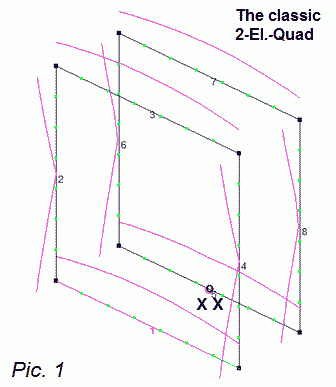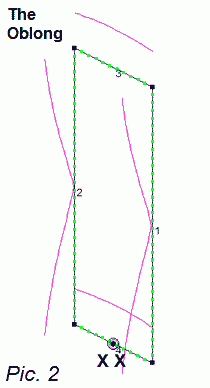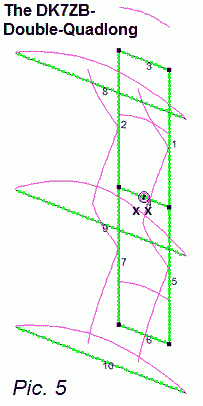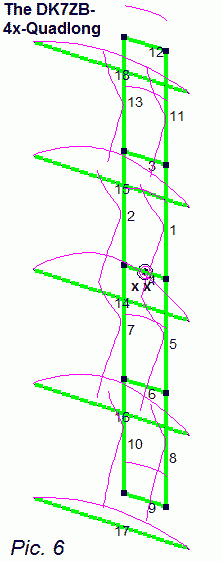The
first step is a simple modification. The original single loop with a
circumference of 1 λ and a side length of 0,25 λ
has only a gain of 1,3 dBd and an impedance of 130 Ω.
The Quad element is a stacked system, but the distance between the two parts is
to low and the current maxima are to close together. We can increase the gain by
changing the Quad to an “Oblong”. The stacking distance will be greater, but
the radiating horizontal parts of the loop become smaller. The best compromize
between the two influences and the bandwidth is a relation of 0,15 : 0,4 λ
(pic. 2). The gain of this loop is now 2,6 dBd and the radiation
resistance drops down to 35 Ω.
This is the reason why the elements should not be wires with too much loss.
See table 1.
Table
1: Data of 2-m-Oblongs with 6-mm-Elements, lengths in lambda
| Circumference |
Hor. |
Vert. |
Impedance |
Gain |
| 1,13 λ |
0,186
λ |
0,378
λ |
50
Ω |
2,29
dBd |
| 1,12 λ |
0,153
λ |
0,406
λ |
33
Ω |
2,62
dBd |
| 1,11 λ |
0,136
λ |
0,420
λ |
25
Ω |
2,77
dBd |
|
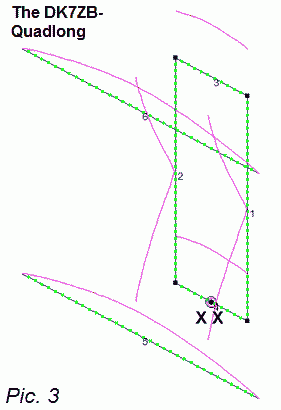
|
